May Q&A with Michael Whelan
Diving into style and influences plus new Tolkien art coming Wednesday

Sometimes a simple question floats in that I think we’ve answered in the FAQ or in Michael’s biography on the website. When there’s nothing there to point to, it often leads to an expansive answer from Michael. We had one such question in May that we’ll lead off with for today’s Q&A.
-Michael Everett
Noah Eckenrode asked via email:
I was wondering what inspired the visual style of your Sci-fi and Fantasy art?
MRW: It’s really hard to answer because I’ve been influenced by many things, many artists over the years. It’s not like I can point to one or two people and say: “This guy is who I wanted to emulate.”
All my life I’ve seen things which sparked my interest. Comic books, illustrations, paintings in museums or on somebody’s wall, and all my real-life experiences: all of these things make up the synthesis of what I draw from when I seek to portray something important or interesting to me.
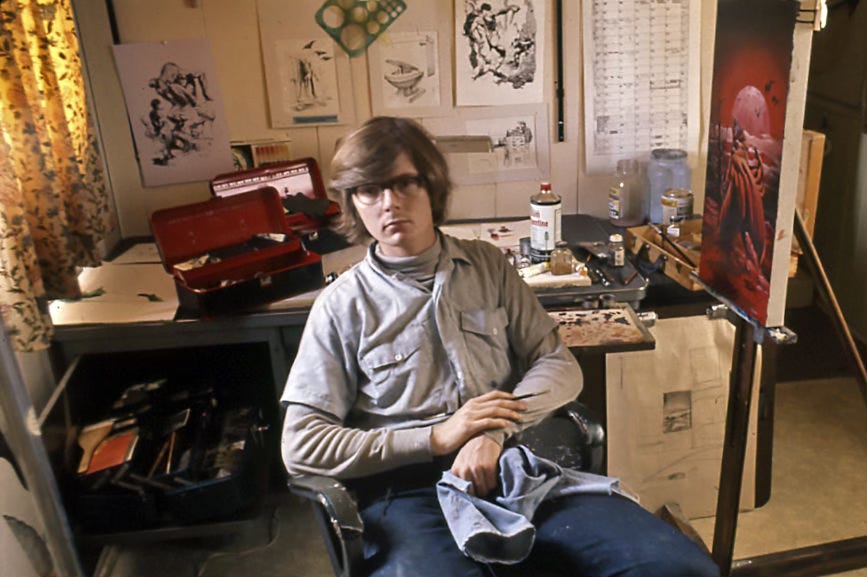
That desire to create is then filtered by whatever physical and mental attributes and limitations that make me a human being, and that defines whatever a person would call my “style”.
Like anybody, from my earliest years onward, I’ve seen things I thought were cool and made note of them—in movies, TV, artwork, and, of course, in the real world. As I grew up, I went through stages of liking some artists more than others, but I must say that in my earliest attempts at drawing, I was just trying to “make a picture” that I liked, not imitating someone else’s work.
Often I was trying to recreate something that I saw in the movies: space monsters or alien worlds and creatures. Otherwise I was attempting to visualize what I was seeing in my head, either something of my own that I imagined or, more often, something interesting that was described in a story I’d read.
As I matured I would come upon a Frazetta or Norman Rockwell or Maxfield Parrish or MC Escher, etc, etc, and be wowed by the things they could do. Their work might influence me technically in one way or another, and open my mind somewhat to possibilities of expression I hadn’t discovered for myself before.
But it must be stressed that such influences are ultimately a cumulative thing; and there’s a LOT of great artists out there. Each one has SOME quality or vision that I find absorbing, but many of them have qualities I wish to avoid as well. All in all, then, my influences are legion, far too many to enumerate!
In retrospect, probably the greatest factor in what you describe as my “style” is a result of my usual choice of medium: acrylics. My acrylic paintings have a definite look about them, rather different from my oil paintings. That’s mostly because the inherent quality of acrylics force certain creative decisions due to their being water-based and having such a fast drying time.
Matt Hill on Bluesky Social commented:
Fabulous! [LUMEN 6.2] reminds me of this stupendous etching in "Perspectiva pictorum et architectorum."
MRW: Yeah, I see the similarities. More importantly, I see the differences.
My tunnel is comprised of windows, all of which are blocked or locked…except for ONE, which after an unknown time has been found by my protagonist. There’s a story and some meaning in that, which was the genesis of my painting.
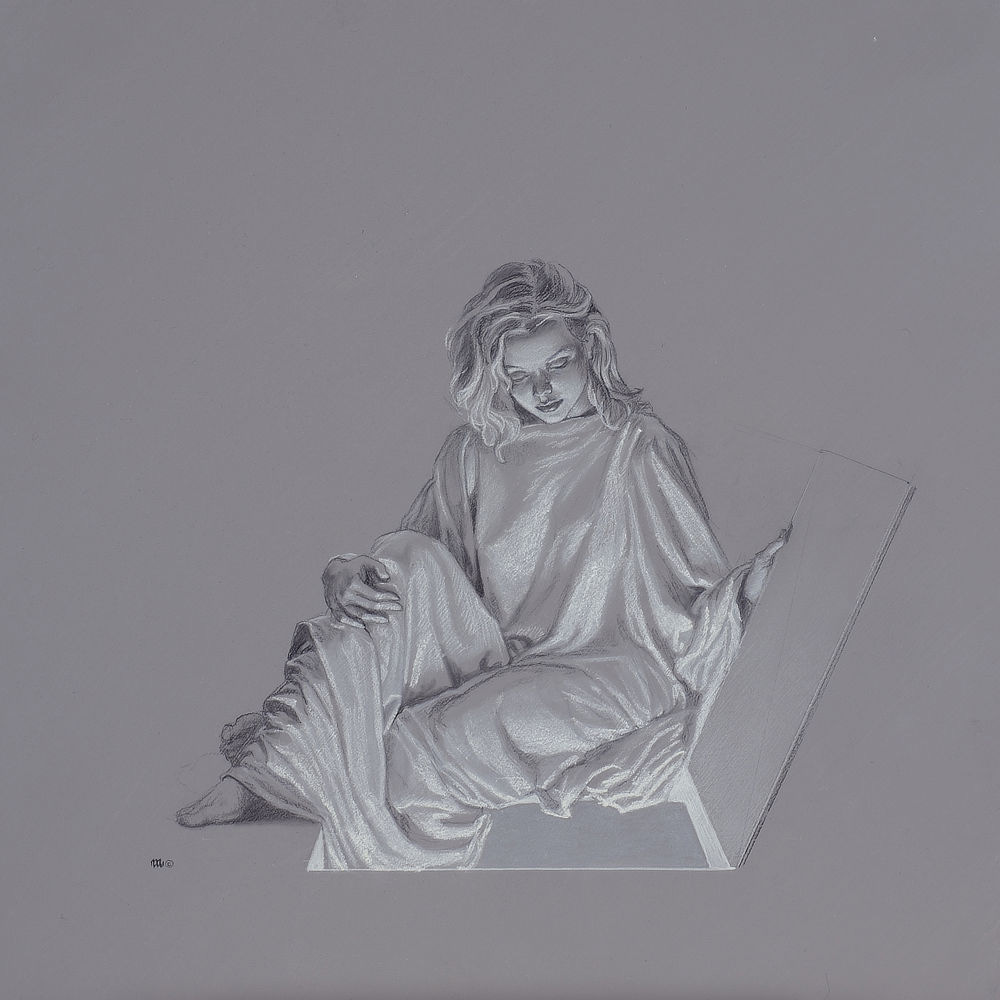
I had a model pose for me so I could convincingly detail the folds of the clothing she was draped in. The model’s name was Cary. She also posed for EDGEDANCER and one or two other paintings I did.
I had some rather wacky painting ideas then, which I asked her to pose for—paintings which I have yet to get to—and she was obligingly accommodating considering that the poses I envisioned required quite a bit of imagination.
Carson Daniel on Bluesky Social asked:
Technical question - for these little details [on DOORWAY TO THE WEST], what kind of brush do you use so that the paint isn’t just drying out instantly on the brush? Surely you didn’t use like, a size 0?
MRW: No, I use a size 000! It’s best to simulate detail whenever possible, but there are often times when I can’t avoid using a small detail brush…usually on small paintings with a lot of detail. This one took a lot of patience, but I was driven.
Montis Boeher on Bluesky Social asked:
Is your panel Masonite or another type? I was a student of Robert Venosa for many years and he really got me addicted to painting on Masonite.
MRW: My favorite panel is a commercially made product from Ampersand called Gessobord. The surface is ideal for acrylic work, with almost a magical ability to keep the paint workable far longer than other surfaces I’ve tried.
There’s a new set of primers from a company called “Colourfix” which I like very much because they have an extremely aggressive tooth, and sometimes I’ll coat a Gessoboard with such a primer.
There’s another brand which predates the Ampersand product, which I’ve long had in my studio. I think they (are? were?) called “Windberg” panels, basically thick Masonite with a toothy gesso coating suitable for all media.
I remember buying several small (8x10, 9x10, etc) sizes of them to try them out. I think DOORWAY TO THE WEST was done on one of those… but I could be wrong. 😉
Robert Venosa taught classes? Where, when? Wow, I would have tried to attend some of those! His work is so unique!
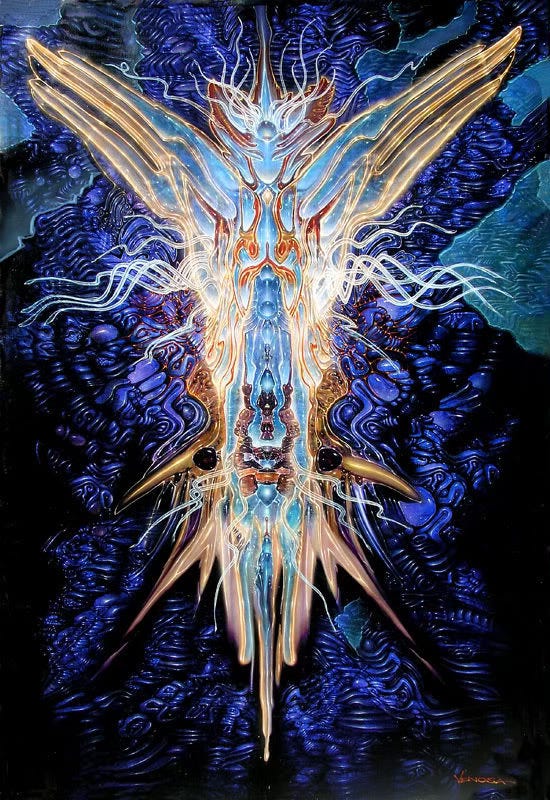
MB: He taught them at Art Hardware in Boulder Colorado when we were open. Sadly, the store and warehouse has closed and Robert passed several years ago. I think his wife Martina is still teaching though.
Ren on Bluesky Social asked:
Yeah this is insane. Do you remember how long this piece [DOORWAY TO THE WEST] took?
MRW: Sorry, I can’t remember how long it took for me to do the painting, though I’m sure it wasn’t any “weekend work” 😉 That’s why so many of these tightly detailed paintings are so small.
I’m not trying to dodge the question; it’s just that [as noted elsewhere] I usually have at least two works going on at the same time, so I don’t do a good job of tracking how many hours or days are spent on any one piece.
I’m sure it’s not good “business practice”, but the only way I know how to be creative is to I work on a piece until it seems finished to me. As Norman Rockwell said about his own work, “Some come easy, some come hard.” If I goof up it’s on my time to correct the error.
LadyKayDoesArt on Cara asked:
I love the vibe of this. What was the trick to get frigid feel?
MRW: I guess I’d say “cool colors”— 😉… You know, blues and greens and cold purples.
All the “star stone” studies I generated during my struggle to get a grip [sorry about that] on the Lovecraft imagery I saw in At The Mountains of Madness were founded on his description of the objects as being of a translucent green color. Many of these studies, therefore, began with a more or less complex design of a soapstone star—to which I later added other elements, just to make a complete painting.
Weekly Art Recap
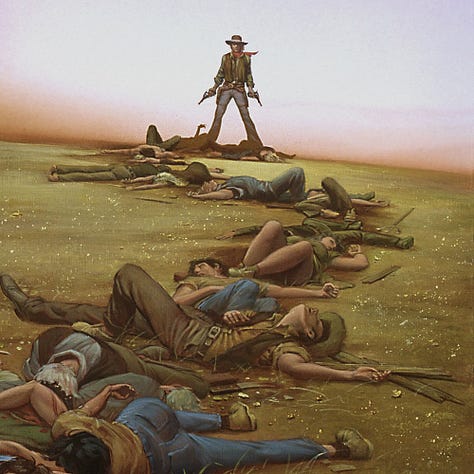
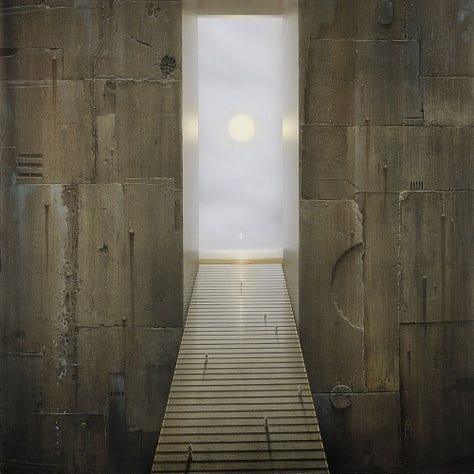
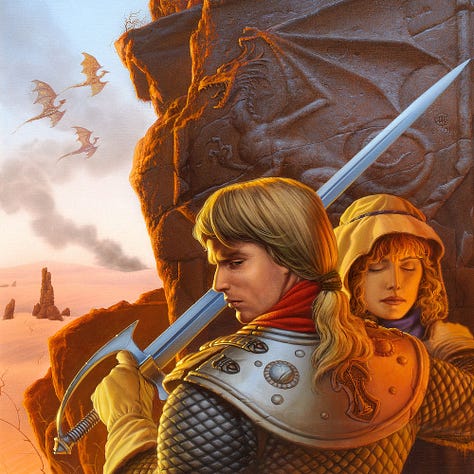

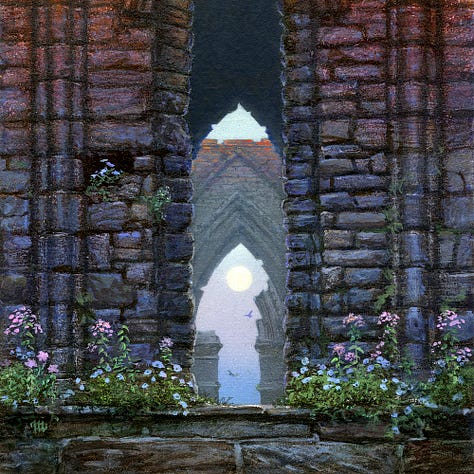
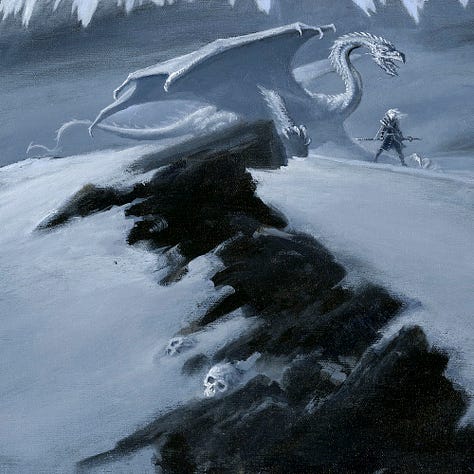
The Dead Town - illustration for The Gunslinger by Stephen King
The Red Step - a Passage of sorts through Michael’s first real artist block
The Dragon’s Sword - from Melanie Rawn’s second Sunrunner trilogy
Swords and Ice Magic - an old fan favorite for Grand Master Fritz Leiber
Moon’s Window - inspired by the architecture of Whitby Abbey
Elric and the Cold Drake - revisiting Elric of Melnibone years after the covers for Grand Master Michael Moorcock
A Palette Gremlin for Whelan Wednesday
A rare look back at one of Michael’s favorite scenes from The Hobbit as he plucks Mister Bilbo Baggins from the comfort of the Shire and sets him on a familiar adventure only to be interrupted by a trio of pesky trolls.
An exclusive preview of the original art featured this week will be available for our paid subscribers on Substack before the art is released in our shop on Wednesday, May 28 at 11am ET.
Subscribe so you don’t miss a thing…
If you like in-depth content about Michael Whelan’s art, please consider subscribing. Our weekly newsletters are free, and we offer additional perks for paid supporters.




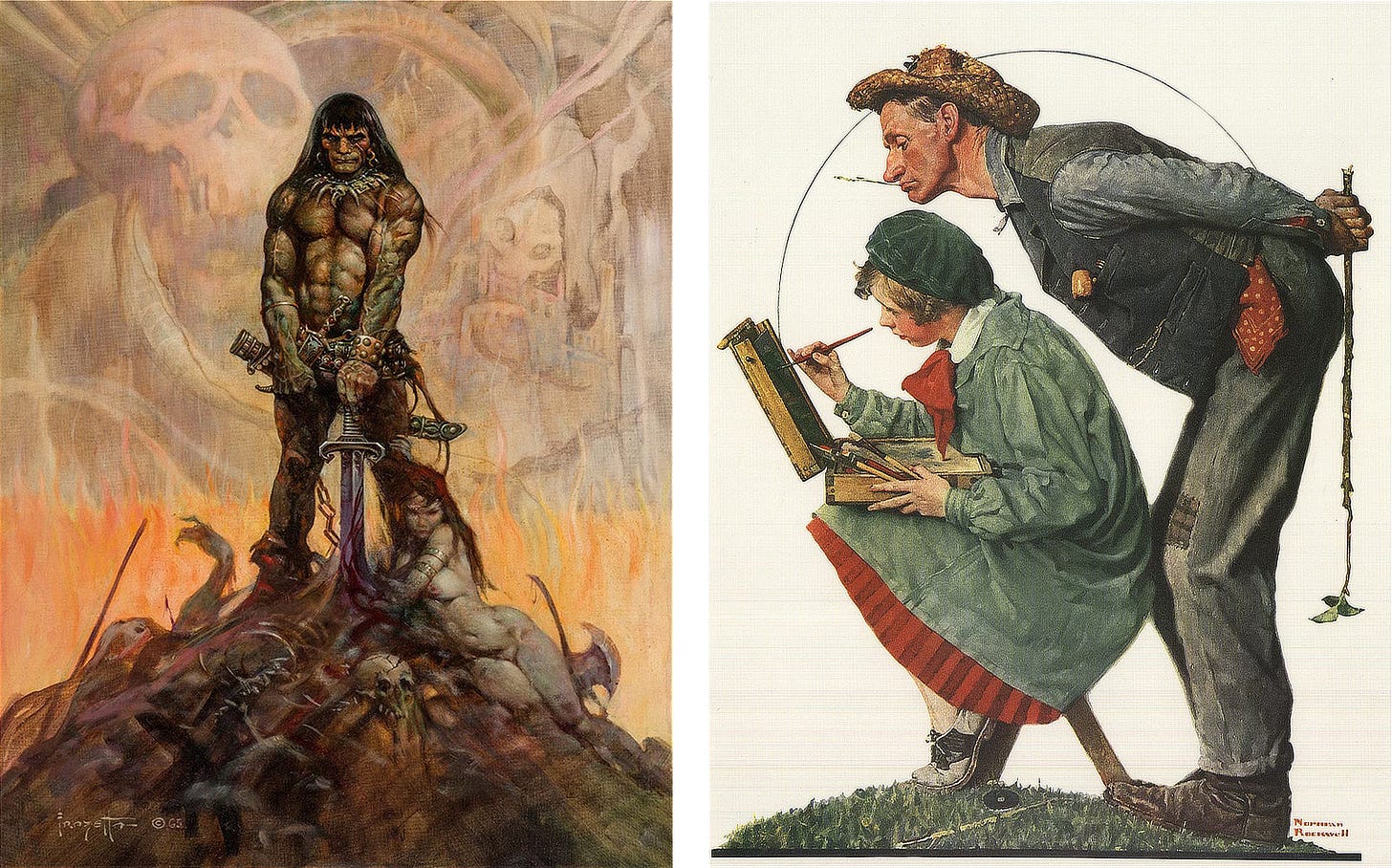
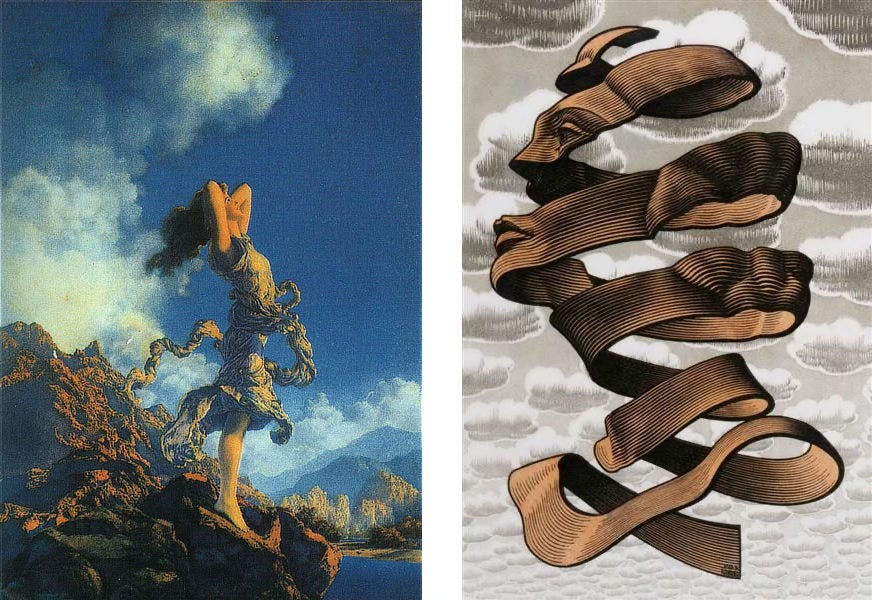
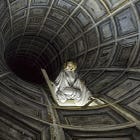
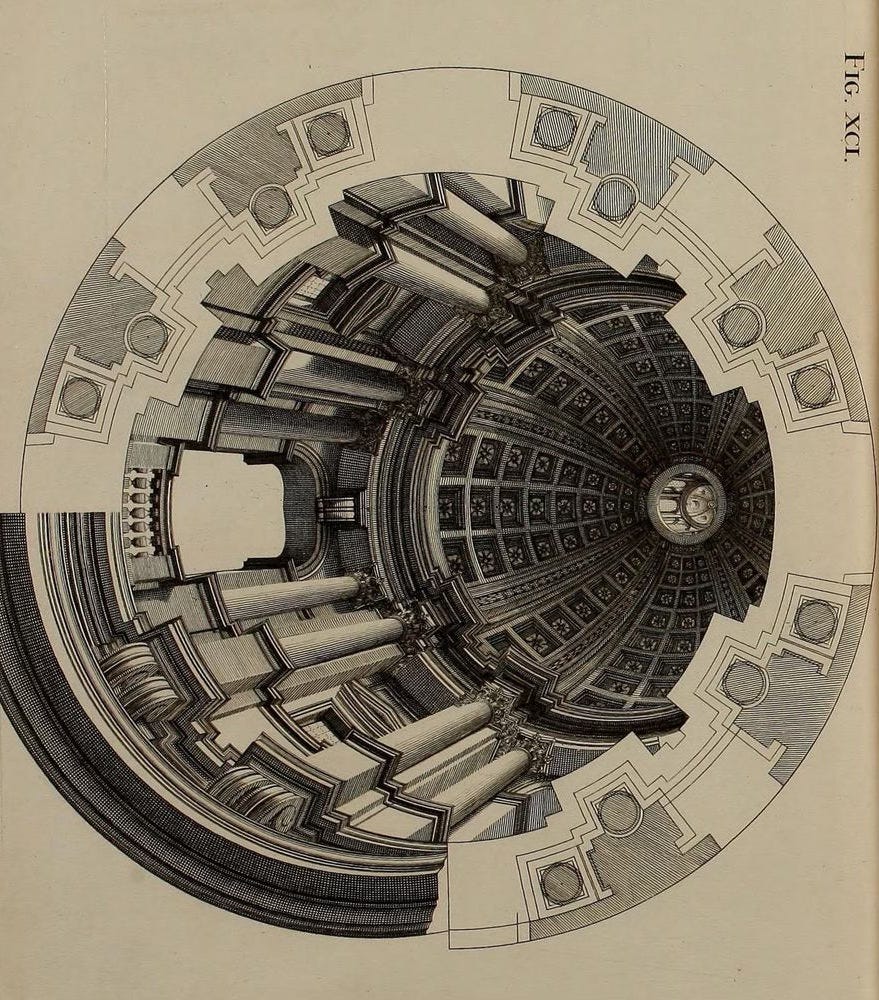
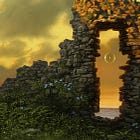
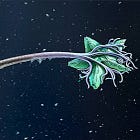
I always assumed Micheal was born with a beard.